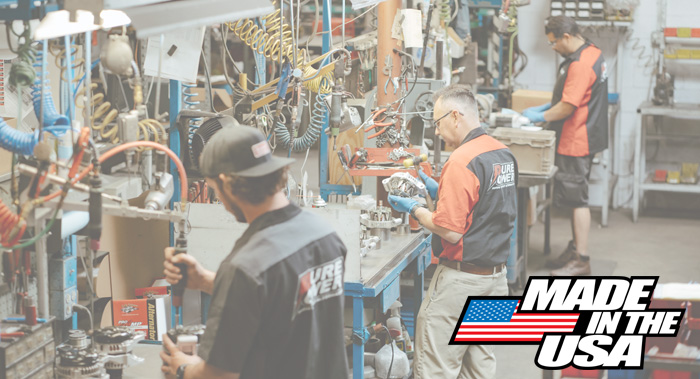Tucson and Phoenix Locations will be closed this Saturday April 19.
Myths About High Output Alternators That Everyone Should Know
Alternators are a compact but very useful and critical component of your car, and if you’re having issues with starting or keeping a battery charged then the alternator could likely be the culprit. On the other hand, if you’ve upgraded your vehicle or are looking to enhance some of your features, a high output alternator is an excellent idea and could be required to handle the increased power demands.
No matter what your reasoning is, every vehicle can benefit from upgraded high output alternators. However, like most things relating to automotive repairs, there are a lot of misunderstood facts and misinformation surrounding alternators. In this article, we’ll cover everything you need to know to make the best decision possible and determine what alternator will work best for you.
Myth #1: I only need a new alternator if my car won’t start
While this is an excellent reason to look into replacing your alternator, it’s far from the only one! Some other signs to watch out for are:
- Dim lights or lights that change brightness
- Dead batteries, even after jump starting
- Malfunctioning accessories, such as the AC or radio
- Strange noises from under the hood indicating an issue with the serpentine belt
- Unusual smells like burning rubber or wire
- The battery warning light on your dashboard
If you’re experiencing any of the above issues, it’s a good idea to look into the alternator right away, as no matter the cause these issues can develop into serious problems quickly.
Myth #2: Only broken alternators need to be replaced
While it’s obviously true that any malfunctioning or broken alternator will need to be replaced promptly, there are other reasons people look into upgrading them with high output or performance alternators. Some of these reasons might be:
- More efficient alternators help conserve fuel
- You want to install a high-quality sound system with powerful speakers
- You want your battery to last longer
- You’re looking into other upgrades, like brighter headlights, LED lighting strips, or hydraulics
Myth #3: A high output alternator can damage vehicle components
One common misunderstanding about alternators is the worry people have about over-charging their battery or supplying too much power to their equipment. These fears are totally unfounded, as there really is no such thing as an alternator with too high of an output.
That’s because alternators work on an “as-needed” basis. Essentially, alternators only supply the amount of power that certain equipment needs, and won’t supply more than that in any circumstance. So, you don’t have to worry about choosing an alternator with too high of an output that will somehow “fry” your electronics.
Myth #4: You don’t need to change out the ground straps and charge wire when upgrading to a high output alternator
While a new alternator doesn’t require much in the way of major changes to your vehicle and is an overall fairly easy process to install, most high output alternator manufacturers recommend that you also change out the wires connecting it to the rest of the vehicle with a higher gauge, or thicker wire, to handle the increased load.
The wiring between the alternator and battery will be under more stress than before, so providing a thicker and more robust wire will help keep the electricity from backing up or causing excess heat in the engine.
Myth #5: You don’t need to worry about RPM and pulley ratios
To fully understand alternators, you must understand the concept of a pulley ratio. Essentially, the core of the alternator is an electromagnetic generator, which is spun using the mechanical action of the wheels. Because of the way pulleys and ratios work, the smaller rotor shaft in the alternator spins faster than the RPM of the vehicle.
You want your alternator to be within a normal range, usually between 2,400 and 18,000 RPM. In order to calculate this, you must first take the width of the crank pulley and divide it by the alternator pulley.
For example, if your crank pulley is 6 inches wide and your alternator pulley is 2 inches wide, that gives you a ratio of 3:1, which is ideal for most street vehicles. Next, you will take that ratio, and apply the lowest RPM (while idle) to it. So, let’s say your car idles at 800 RPM, with a 3:1 ratio, this means that the alternator idles at 2,400 RPM - exactly where it should be.
While this may seem complicated at first, it’s really just a matter of some simple measurements and calculations, which will lead to a longer-lasting, better performing vehicle. If you’re considering upgrading your alternator or are concerned about the speed yours is rotating at, contact a high output alternator retailer today and they can always help you figure it out and find the perfect piece of equipment for your vehicle!

NEED HELP? CALL US 1-520-622-7395
M-F 8-5 / SAT. 9-2
FAST SHIPPING
Orders placed by 2pm EAST will be processed same day








